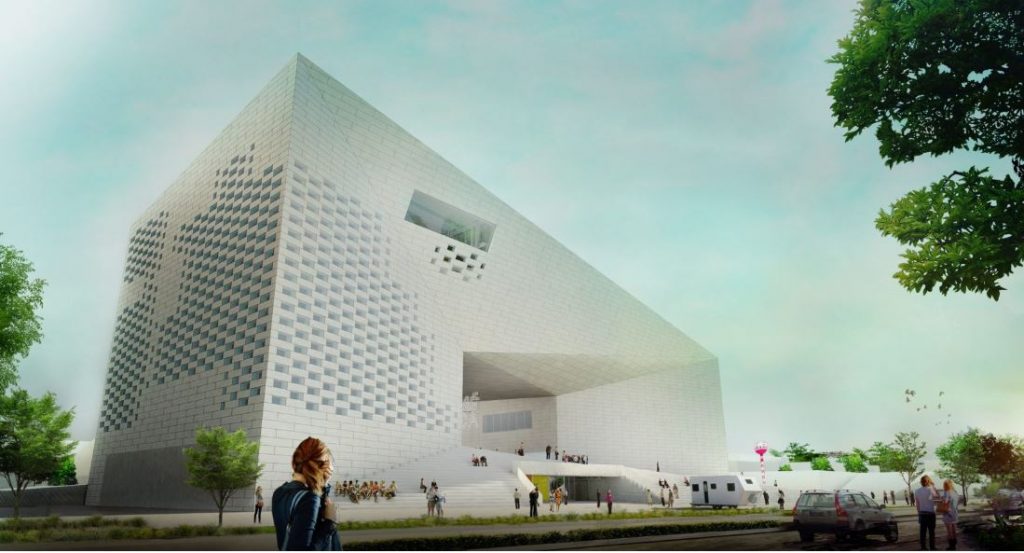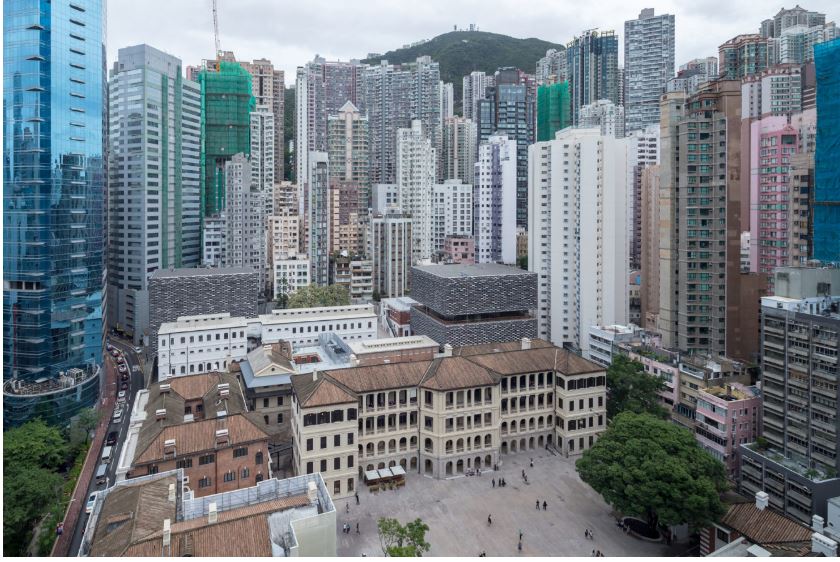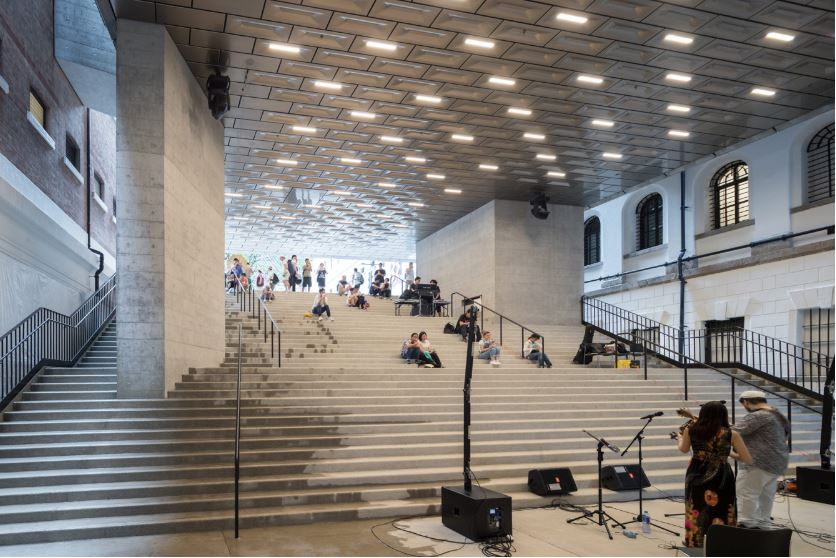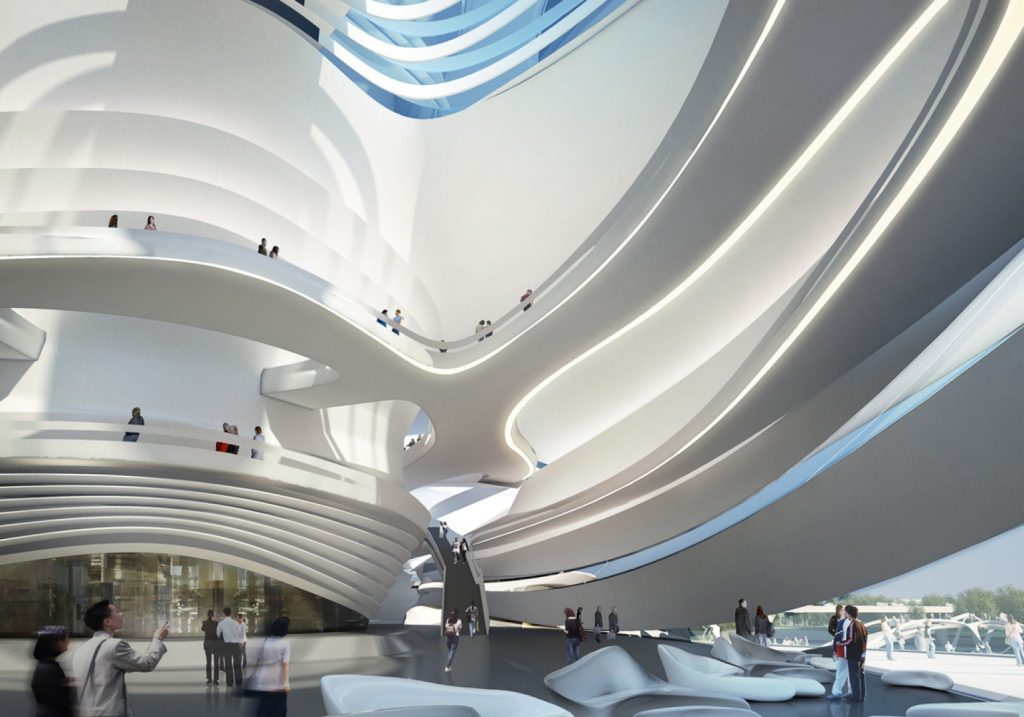Cultural centers that formerly could be summed up as institutions set up to promote culture and arts are now being transformed into cultural hubs. New buildings for cultural centers are more than just a cluster of venues, they often include museums, galleries and performance centers with supporting attractions such as food services and retail spots.

The BIG (Bjarke Ingels Group) based in Copenhagen, New York and London together with the Paris based Freaks have designed a new cultural venue in the city of Bordeaux. The MECA (Maison de l’Économie Créative et de la Culture) aims at bringing more international presence into the region. It will offer a regional art centre, a performing arts centre, an agency for books, cinema and audiovisual media.

The MECA by the BIG (Bjarke Ingels Group)
BIG’s signature expressive style manifests itself in the building’s parametrically designed structure. The construction resembles a giant loop wrapping around itself and creating a hole in the building with an asymmetrical arch on the top.

The MECA by the BIG (Bjarke Ingels Group)
The multiple square windows of the facade serve to conceal the number of floors and to control the amount of light entering the spaces and offices. Its theatre stage features a black cubed backdrop and rows of seating hidden under the floor that pop up during performances. The upper floor of the new public space opens with a huge terrace overlooking the city.

Tai Kwun hub by Herzog & de Meuron
The Basel based Herzog & de Meuron have remodeled the former Central Police Station, the Central Magistracy and the Victoria Prison in Hong Kong to create a new cultural destination for the community.

Tai Kwun hub by Herzog & de Meuron
After the historical buildings were vacated, a rare “courtyard” in the middle of one of the most populated cities in the world was formed – surrounded by a collection of unique buildings. The designers intended to relieve the site from being seen simply as the reminder of the past, but to position it as an ever-evolving urban space.

Tai Kwun hub by Herzog & de Meuron
Two bold contemporary buildings clad in perforated aluminium bricks were inserted into the complex: a gallery for contemporary art and a cube-shaped 200-seat auditorium for the performing arts, film screenings and events. This blend reflects the connection of the heritage and the contemporary in the nation’s mentality.

Changsha Meixihu International Culture and Art Centre by Zaha Hadid Architects
London based Zaha Hadid Architects have designed Changsha Meixihu International Culture and Art Center in China.
The cultural complex is located beside Meixi Lake in Changsha and will contain a theatre, a contemporary art museum and a smaller multi-purpose venue – all placed by the architects in three petal-shaped buildings.
The studio’s signature white, fluid facades, punctured by curving panes of glass, embody functionality, elegance and innovation and create a new cultural destination. A giant stepped plaza forms pathways between the buildings which are aligned with routes to the surrounding area.

Changsha Meixihu International Culture and Art Centre by Zaha Hadid Architects
The Grand Theatre is meant to seat up to 1,800 people thus becoming the largest performance venue in the city with all the necessary lobbies, cloakrooms, bars, restaurants, as well as rehearsal rooms and backstage facilities.
The Small Theatre can be shaped into a number of different configurations and opens out to a sunken courtyard filled with restaurants and shops.

Changsha Meixihu International Culture and Art Centre by Zaha Hadid Architects
The Museum will have a central atrium that separates to form three wings.